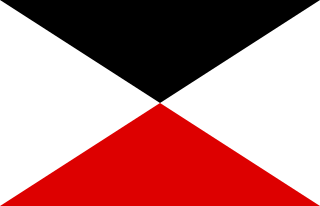
The Army of the Niemen was an army level command of the German Army in World War I.

The 1st Army was an army level command of the German Army in World War I. It was formed on mobilization in August 1914 from the VIII Army Inspectorate. The army was dissolved on 17 September 1915, but reformed on 19 July 1916 during the Battle of the Somme. It was finally disbanded in 1919 during demobilization after the war.

The 2nd Army was an army level command of the German Army in World War I. It was formed on mobilization in August 1914 from the III Army Inspection. The army was disbanded in 1919 during demobilization after the war.

The 3rd Army was an army level command of the German Army in World War I. It was formed on mobilization in August 1914 seemingly from the II Army Inspectorate. The army was disbanded in 1919 during demobilization after the war.

The 5th Army was an army level command of the German Army in World War I. It was formed on mobilization in August 1914 seemingly from the VII Army Inspection. The army was disbanded in 1919 during demobilization after the war.

The 7th Army was an army level command of the German Army in World War I. It was formed on mobilization in August 1914 from the II Army Inspection. The army was disbanded in 1919 during demobilization after the war.

The 6th Army was an army level command of the German Army in World War I. It was formed on mobilization in August 1914 from the IV Army Inspectorate. The army was disbanded in 1919 during demobilization after the war.

The 9th Army was an army level command of the German Army in World War I. It was formed in September 1914 in Breslau to command troops on the southern sector of the Eastern Front. The army was dissolved on 30 July 1916, but reformed in Transylvania on 6 September 1916 for the Romanian Campaign. It was transferred to the Western Front on 19 June 1918 where it was finally dissolved on 18 September 1918.

The 10th Army was an army level command of the German Army in World War I formed in January 1915 in Cologne. It served exclusively on the Eastern Front. It was dissolved on 6 January 1919.

The 11th Army was an army level command of the German Army in World War I. It was formed in March 1915 in Kassel originally to serve on the Western Front but was transported to Galicia for service on the Eastern Front. The army was dissolved on 8 September 1915, but reformed on 23 September 1915 for the Serbian Campaign. It was finally dissolved on 7 January 1919.

The 17th Army was an army-level command of the German Army in World War I. It was formed in France on 1 February 1918 from the former 14th Army command. It served exclusively on the Western Front and was dissolved on 19 January 1919.

The 18th Army was an army level command of the German Army in World War I. It was formed against France on 27 December 1917 from the former Heeresgruppe Woyrsch command. It served exclusively on the Western Front and was dissolved on 2 January 1919.

The 19th Army was an army level command of the German Army in World War I. It was formed in France on 4 February 1918 from the former South Army command. It served exclusively on the Western Front and was dissolved on 24 January 1919.

Armee-Abteilung Strantz / Armee-Abteilung C was an army level command of the German Army in World War I. It served on the Western Front throughout its existence.

Armee-Abteilung Gaede / Armee-Abteilung B was an army level command of the German Army in World War I. It served on the Western Front throughout its existence and formed the extreme left wing.

Armee-Abteilung Falkenhausen / Armee-Abteilung A was an army level command of the German Army in World War I. It served on the left (southern) wing of the Western Front throughout its existence.
This is the German Army order of battle on the Western Front at the close of the war.

The Army of the Bug was an army level command of the German Army in World War I named for the Bug River. It was formed against Russia on 8 July 1915 and served exclusively on the Eastern Front. It was dissolved on 31 March 1918.

The Guards Reserve Corps was a corps level command of the German Army in World War I.

The 54th Corps was a corps formation of the German Army in World War I. It was formed in September 1916 and was still in existence at the end of the war.



